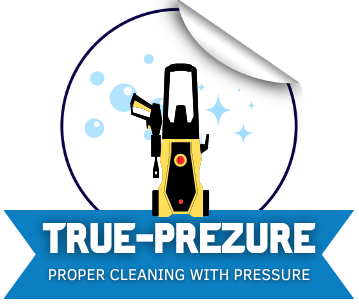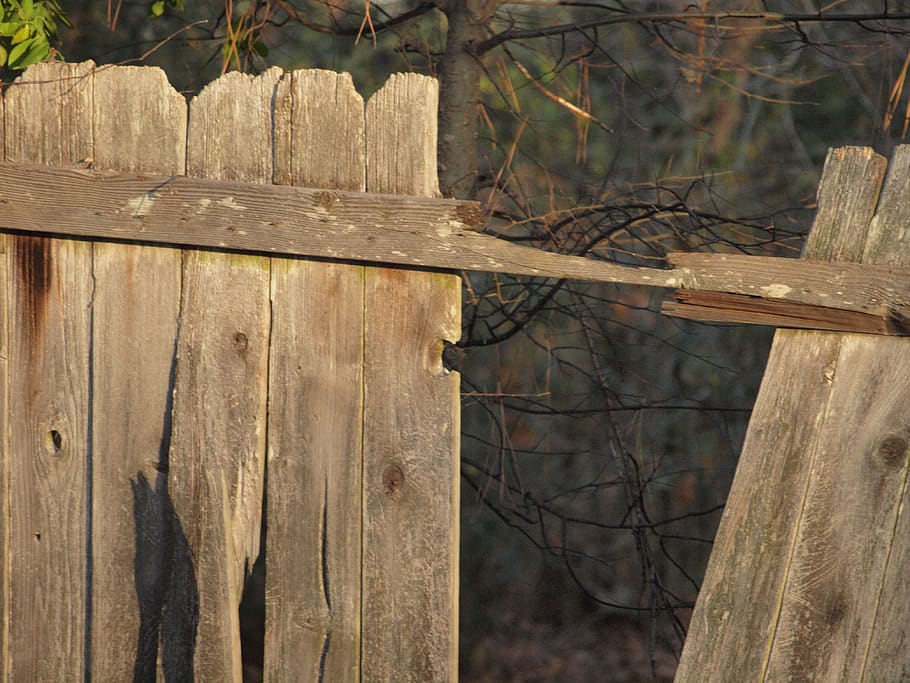My Deck And Fence Look Fuzzy After Cleaning and you also frustrated because your deck or fence looks fuzzy after cleaning?
Don’t worry, you’re not alone! Many homeowners experience the same problem after power washing their outdoor wooden structures. The good news is that there are solutions to get rid of this fuzziness and restore the natural beauty of your deck.
In this blog post, we will discuss why decks become fuzzy after power washing and how to fix it in easy steps. So, grab a cup of coffee and let’s dive into the world of deck maintenance!
How to fix a fuzzy deck in easy steps
Step 1: Clear Dirt and Debris
The first step to fixing a fuzzy deck is to clear it of any dirt and debris. Use a broom or leaf blower to remove any loose leaves, sticks, or other debris from the surface of your deck.
Step 2: Power Wash Your Decking.
Next, power wash your decking with a pressure washer set at low pressure. This will help remove any remaining dirt and grime that may be causing the fuzziness on your deck.
Step 3: Sand Fuzzes
After you have power washed your deck, allow it to dry completely before sanding down any remaining fuzziness. Use an orbital sander with fine-grit sandpaper to gently sand down the rough areas until they are smooth.
By following these easy steps, you can fix a fuzzy deck without having to replace it entirely. However, if the damage is severe, it’s best to contact professional services for repairs or replacement. Remember always use protective gear while dealing with chemicals like bleach during cleaning as they might cause allergies and harm respiratory system
Do you have to sand a fuzzy deck or can you leave it?
After giving your deck a power wash, you might notice it’s gone a bit fuzzy, like it grew a tiny beard! This fuzziness happens because the high-pressure water spruces up the softer parts of the wood, making it feel rough.
Now, here’s the fun part: whether or not you should sand your deck after this fuzzy makeover is up to you. If you’re cool with the rugged texture, no need to grab that sandpaper. But if you prefer a smoother, splinter-free deck (who likes painful surprises?), sanding is your friend.
Think about whether you plan to slap on some stain or sealant afterward. If you do, it’s smart to get rid of those fuzzies first. This way, your protective coat will go on smoothly and stick better.
So, while sanding might take a little extra time and elbow grease, it’s like giving your deck a spa day—it’ll look better and be safer for everyone who hangs out there.
Get it done right and your fuzzy deck won’t be a problem
Getting your deck clean is a great way to make it look fresh and new, but sometimes it can end up looking worse than before. If you’ve recently cleaned your deck and now it looks fuzzy or has raised wood fibers, don’t worry! With the right approach, you can easily get rid of those unsightly fuzzies.
Firstly, if you’re cleaning your deck with a power washer, make sure that you use the appropriate pressure setting for the type of wood that your deck is made from. Too much pressure can damage the wood and cause it to become fuzzy.
Secondly, after cleaning your deck with water or detergent, allow it to dry completely before taking any further action. This will give you a clearer view of what needs to be done next.
Thirdly, once your deck has dried out fully and any raised fibers have become visible on the surface; gently sand these areas until they are smooth again.
Applying a sealant or stain after sanding will help protect against future fuzziness by sealing off any open pores in the wood which could attract moisture over time.
Why Has The Deck Turned White After Cleaning?
If you’ve recently power washed your deck and it has turned white, don’t panic. This is a common occurrence that happens due to the stripping away of the outer layer of wood cells during cleaning. The technical term for this process is called “grain raising.”
When water penetrates the wood fibers, it causes them to swell and lift up from the surface, resulting in a fuzzy or raised texture on your deck. This can make your deck look discolored or faded.
Another reason why your deck may have turned white after cleaning could be because of using too much pressure while washing or holding the nozzle too close to the surface when spraying. High-pressure water can penetrate deep into softwood fibers causing damage that may take some time to repair.
To restore your deck’s natural color after grain raising has occurred, you’ll need to sand it down thoroughly before refinishing with a high-quality stain or sealant. It’s also important to use proper techniques and equipment when power washing in order to prevent future fuzzing issues.
What Are Reasons For Deck Fuzzy After Power Washing?
After power washing your deck, you may notice that the wood has become fuzzy or raised. This is a common issue that many homeowners experience and there are several reasons why this might happen.
One reason for deck fuzziness after pressure washing is the use of high-pressure settings on the washer. If too much pressure is used, it can cause damage to the wood fibers which leads to roughness and fuzziness. Another reason could be due to using hot water during cleaning as it can also cause damage to the wood surface.
Another factor leading to deck fuzziness could be related to improper preparation before power washing. Dirt and debris left on the surface can get pushed into the pores of wood when pressure washed, which causes more significant damages than just dirt removal.
Decks made from softer woods like cedar or pine are more prone to becoming fuzzy because their fibers are looser compared with denser hardwoods like oak or mahogany.
Understanding these reasons will help you make informed decisions when looking for ways to prevent deck fuzziness after power washing.
How To Fix Fuzzy Wood After Pressure Wash
After pressure washing your deck, you may notice that the wood has become fuzzy or splintered. This is a common issue and can be easily fixed with a few simple steps.
To start with, let the deck dry completely before moving ahead. Trying to fix fuzzy wood while it’s still wet will only make matters worse. Once the deck is dry, inspect it closely to determine how much fuzziness there is and where it’s located.
Using a sander with 80-grit sandpaper, gently sand down any areas of fuzziness until they are smooth. Be careful not to over-sand as this can damage the wood even further.
Once you’ve finished sanding, use a broom or vacuum to remove all dust from the surface of the decking. Then apply an appropriate sealer or stain according to manufacturer guidelines for best results.
By following these simple steps, you can quickly and easily fix your fuzzy deck after power washing without causing any further damage to the wood surface.
How To Prevent Deck Fuzzy After Power Washing
Step 1: Clear Dirt and Debris
Before starting the power washing process, it is essential to clear any dirt and debris from your deck. This step will ensure that the power washer can reach every nook and cranny of your deck, delivering a thorough cleaning.
Start by sweeping off any loose dirt or leaves on your decking surface. Use a stiff-bristled broom to remove stubborn debris like mud or stuck-on leaves. For hard-to-reach areas, use a putty knife or scraper tool to dislodge caked-on grime.
Next, remove any furniture, pots or plants from your decking area. You don’t want anything obstructing the path of the power washer.
If you have nearby flower beds or bushes surrounding your decking area, cover them with plastic sheeting to protect them from water damage during the pressure washing process.
Once you’ve cleared away all debris and covered nearby vegetation appropriately., you’re ready for Step 2: Power Wash Your Decking!
Step 2: Power Wash Your Decking.
Step 2: Power Wash Your Decking.
After clearing the dirt and debris from your deck, it’s time to power wash it. This step is crucial in removing any remaining grime, mold, or algae that may have accumulated on the surface of your deck over time.
Using a pressure washer with appropriate PSI (pressure per square inch) and fan nozzle size will help blast away stubborn dirt and stains without damaging the wood. Be sure to start at a low pressure setting and gradually increase as needed.
It’s important to note that excessive use of high-pressure water can damage wood fibers, leading to fuzzy decking. To avoid this, keep the nozzle at least six inches away from the surface of your deck while cleaning.
Also, make sure not to linger in one spot for too long as this may cause uneven cleaning or leave marks on your decking. Move along with a steady pace until you’ve cleaned every inch of your deck evenly.
Once you’re done power washing, allow ample time for drying before proceeding with any other maintenance steps. A wet surface can lead to issues like peeling paint or rotting wood if left unattended.
Power washing is an essential step in maintaining a clean and healthy deck. With proper technique and care during this process ensures that you won’t end up with fuzzy decking after power washing!
Step 3: Sand Fuzzes
After power washing your deck, you may notice that the wood fibers have raised and created a fuzzy appearance. This is completely normal and can be easily fixed with some sanding.
Step 3: Sand Fuzzes
To begin sanding, use a fine-grit sandpaper to gently remove the fuzzy layer on your deck. Be sure to avoid using too much pressure or an aggressive grit as this can cause further damage to the wood. Instead, take time to slowly work through each section until they are smooth and free of fuzzies.
It’s important to note that not all decks require sanding after power washing. If your deck is made of composite materials, it won’t need any post-washing treatment since these types of decking don’t have natural fibers exposed in their surface.
However, if you have a wooden deck, then taking care of those pesky fuzzies will help improve its overall look while also protecting against future damage from moisture buildup or rotting caused by trapped dirt particles.
In addition to removing fuzzies with sandpaper when necessary, regularly cleaning and treating your deck will help prevent future issues such as mold growth or warping due to moisture exposure.
Conclusion
A fuzzy deck after power washing is not uncommon. However, by taking the right steps to clear dirt and debris before power washing, choosing the correct pressure washer setting, and sanding fuzzes afterwards, you can easily prevent or fix this issue.
It’s important to remember that if you do decide to use a pressure washer on your deck or fence again in the future, make sure to follow these steps carefully. By doing so, your outdoor space will look clean and inviting without any unpleasant surprises such as fuzzy wood.
With these tips in mind and a little bit of effort on your part, you’ll be able to keep your deck looking its best for years to come!

